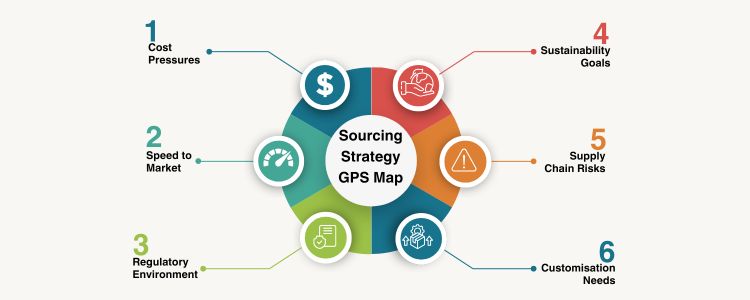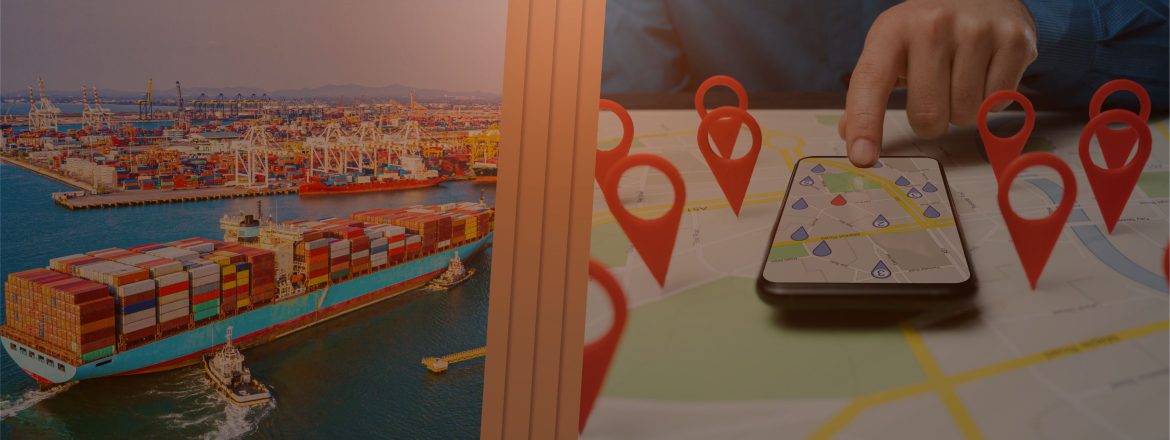Global Sourcing vs. Local Sourcing: Which One’s Right for Your Business?
In the world of today’s rapidly changing supply chain, every business faces an important question: should we source globally or remain local?
India’s exports will cross $775 billion in 2024 and are expected to reach $900 billion by 2025, and thus the country is quickly emerging as the world’s favourite product sourcing center. Selection between global sourcing companies and local sourcing strategies is no longer a case of cost—this is a strategic decision that affects development, flexibility, and stability.
India’s leading product sourcing company, Inducts Global, helps global businesses to customise supply chains through strategies. Let’s use the real-world information to see which sourcing model is suitable for your business.
3 Different Options Based on Different Cases
In the upcoming section we will discuss 3 different stories regarding their choices in the sourcing.
- Case A – Global Sourcing Success
An American electronics brand was struggling with increasing domestic production costs. Under the guidance of global sourcing companies, their supply chain changed by transferring the purchase to Vietnam and India.
Result:
- Production costs decreased by 28%.
- The amount of supply increased by 35% within 18 months.
- The ERP-based shipment tracking reduced the upper expenses of the management.
Challenges: Expensive shipping fees and congestion at ports in the worldwide crisis.
What made Global sourcing work?
- Cost savings over speed.
- Suppliers of competitive value are available to the experts.
- Case B – Local Sourcing Success
Facing Brexit-related tariffs and customs obstacles, a UK FMCG company localised the purchase of packaging materials.
Result:
- Customs clearance time decreased by 45%.
- Compliance cost decreased by 18%.
- The brand loyalty was promoted through the “proud of the local manufactured” message.
- The raw material cost was balanced by a slight increase in speed.
Why was local sourcing effective?
Local brand preference, regulatory ease, and fast delivery were commercial priorities.
- Case C – Hybrid Sourcing Benefits
An Indian apparel exporter mixed sources of local cotton clothing with trims imported from China and Turkey.
Result:
- The lead time for base material decreased by 20%.
- More design flexibility enables premium pricing in export markets.
- Miscellaneous supplier networks reduced the risk.
Why Hybrid sourcing was effective:
- Balance, cost, and specificity of design are balanced.
- The competent supplier switching improved the flexibility of the supply chain.

The Decision-Journey Map
| Decision Factor | Global Sourcing | Local Sourcing |
|---|---|---|
| Product Cost | Lower | Higher |
| Lead Time | Longer | Shorter |
| Supply Chain Risks | Higher | Lower |
| Regulatory Complexity | Higher | Minimal |
| Carbon Footprint | Higher | Lower |
| Brand Perception | Neutral | Positive (“Local”) |
| Scalability | High | Limited |
Additional Tip: Many businesses today prefer a hybrid sourcing model to balance risks and benefits.
Beyond Cost: What Are the Changes in Sourcing?
- Sustainability: The Carbon Border Tax of the European Union, motivated to reduce imports to brands.
- Supply Chain Flexibility: Interruption in the Red Sea highlights the risks of excessive dependence on single countries.
- Local Affection: 73% of buyers now prefer locally obtained products as far as possible.
- Digital Visibility: ERP and blockchain equipment enable global tracking but increase technical costs.
- AI-Trained Supplier Selection: AI tools analyse suppliers risks, prices, and delivery speeds in real time.
Self-Assessment: What Should You Choose?
Answer these 5 questions to clarify your sourcing strategy:
- Do you prioritise cost savings compared to speed?
- Does your market give importance to the “local manufactured” origin?
- Is shipping cost affecting your margin?
- Are regulatory complications slowing your imports?
- Is carbon footprint tracking your top priority?
Most yes for Q1 and Q3? → Till Global Sourcing
Most of the yes for Q2, Q4 and Q5? → Till local or hybrid sourcing
Advice: Prepare your Sourcing strategy for the Future.
As a leading company in product sourcing from India, we recommend a flexible sourcing approach:
- Combine product sourcing from India with local purchases near major markets.
- Digitise supply chains for real-time visibility.
- Priority to stability and compliance.
- Create a multi-country seller network to avoid the risks of disruption.
Why India?
- Export target of $900 billion for 2025.
- The second most attractive country for low-cost manufacturing (Carnney Index 2024).
- Miscellaneous supply base: textiles, auto components, electronics, pharma, and packaging.
- Government Free Trade Agreements (FTA) ensure low fees with the European Union, UK and Australia.
- More than 5 crore skilled employees are available for global supply chains.
Conclusion
At Inductus Global, we believe that the decisions of sourcing should be promoting the growth of business, not just inventory filling. Whether you choose global sourcing, local sourcing, or a hybrid approach, a flexible and durable supply chain is the key to making your business safe for the future









